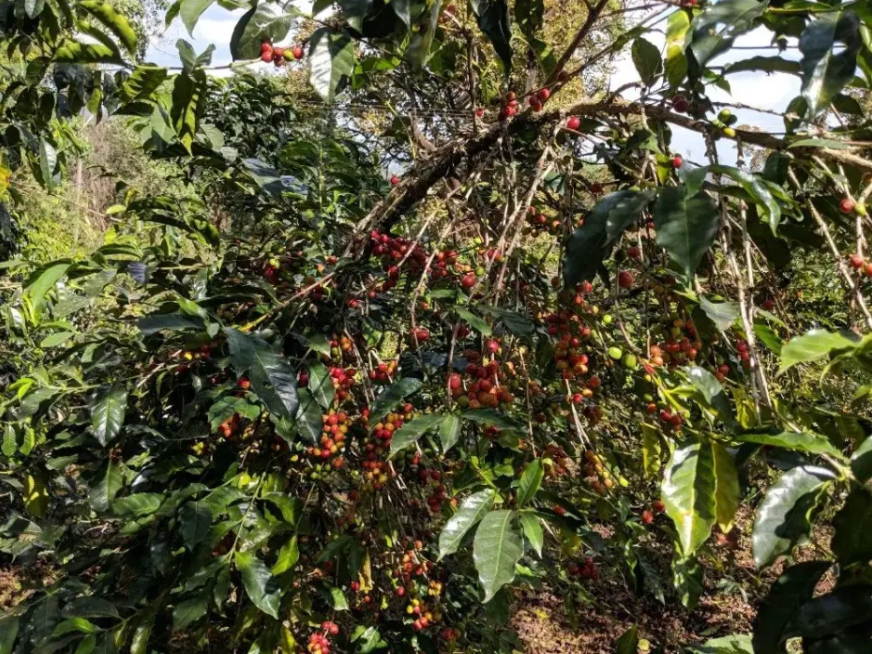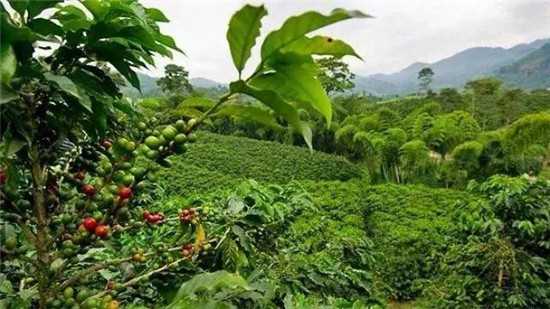The world's top ten famous coffee beans Ethiopia boutique country of origin
In 2004, the Red label Rose Xia of Emerald Manor won the championship in the "Best Panama" coffee raw bean competition. But its tree species can be traced back to neighboring Africa and Ethiopia, where most of the world's coffee beans come from. Why this East African country, with a population of 100 million and a land area of only 1.1 million square kilometers, has become a "shrine" in the global coffee industry, the author will introduce it from the following point of view.
Geographical conditions:
Ethiopia is the interior of East Africa, with a land area of 1.1 million square kilometers and rich topography and geomorphology. The famous East African Rift Valley is located here, forming a unique terrain of alpine valleys and lakes, including the hot desert to the east of the canyon and the jungle in the southwest, with an elevation of 500mur. coffee can be grown, and the main producing areas are distributed in the east and west with the rift valley as the boundary. The altitude is between 1300 and 1800 meters, and the temperature is between 15 ℃ and 25 ℃.
Producing areas:
Among the coffee beans produced in Ethiopia, 95% of the coffee is produced in seven provinces: Kafa, Sidamo, Irubab, Vallega, Goethe, Halehan and so on. The famous Yega Sheffield producing area is from Sidamo province.
Most of the coffee in Yejashafi district grows in areas above 1800 meters above sea level, and its washed beans are famous all over the world because of its unique hydrological conditions. Due to perennial reclamation and gradual reduction of forest area, this area belongs to a densely populated area. The main cultivation mode is courtyard planting, and the production scale is mainly in cooperatives, but in recent years, private washing stations in this area have become an important catalyst for the development of boutique coffee.
Production mode:
More than 90 per cent of Ethiopian coffee is produced by small farmers, while large farms account for only 5 per cent. Most coffee farmers grow less than 1 hectare and export an average of 200000 hectares a year, but before 2007, most coffee farmers earned less than $1 a day. In order to improve the quality of coffee beans and improve the lives of farmers, Trabocca in the Netherlands launched the Red Cherry Project (Operation Cherry Red Project) with local farmers in 2007-- encouraging farmers to harvest 100% ripe red coffee cherries by hand. The price of these coffee is relatively higher than the machine harvest price, the flavor is better, the taste is better, so that it is better recognized in the market.

On the other hand, farmers can distinguish two large seed-bearing environments according to the degree of shade of coffee: one is the forest environment with shade trees, and the other is growing directly in full sunshine.
Important Notice :
前街咖啡 FrontStreet Coffee has moved to new addredd:
FrontStreet Coffee Address: 315,Donghua East Road,GuangZhou
Tel:020 38364473
- Prev

Is caffeine harmful to people? How much caffeine is there in a cup of coffee? Is the bitter coffee more refreshing?
First of all, let's talk about the benefits of caffeine: coffee improves alertness, agility and memory, concentration, and caffeine itself has pain-relieving effects. Coffee is best placed after breakfast and lunch, as it can promote gastrointestinal peristalsis and help digestion. What's wrong with caffeine? Drink too much
- Next

How are the top ten coffee in Ethiopia grown? Introduction to the planting model of coffee beans in Ethiopia
The six modes of growing coffee in Ethiopia are the most diversified in the world. People are usually divided into two large planting environments according to the degree of vegetation cover. The first type is the forest environment with shade trees. The second type is directly in the full sun environment, and these two types of environments derive six kinds of environment.
Related
- Beginners will see the "Coffee pull flower" guide!
- What is the difference between ice blog purified milk and ordinary milk coffee?
- Why is the Philippines the largest producer of crops in Liberia?
- For coffee extraction, should the fine powder be retained?
- How does extracted espresso fill pressed powder? How much strength does it take to press the powder?
- How to make jasmine cold extract coffee? Is the jasmine + latte good?
- Will this little toy really make the coffee taste better? How does Lily Drip affect coffee extraction?
- Will the action of slapping the filter cup also affect coffee extraction?
- What's the difference between powder-to-water ratio and powder-to-liquid ratio?
- What is the Ethiopian local species? What does it have to do with Heirloom native species?

